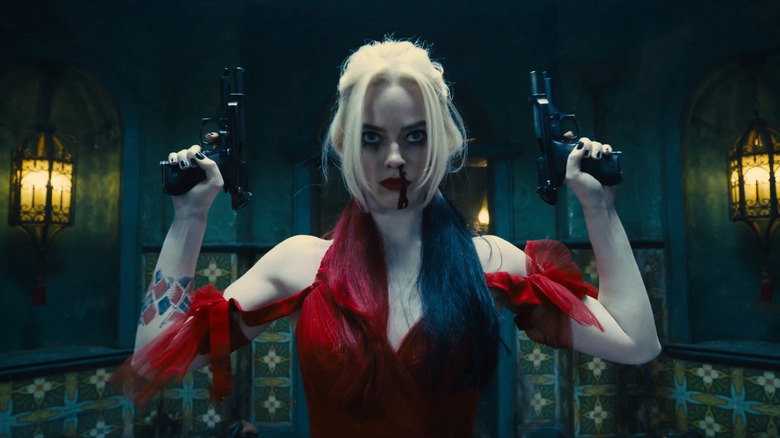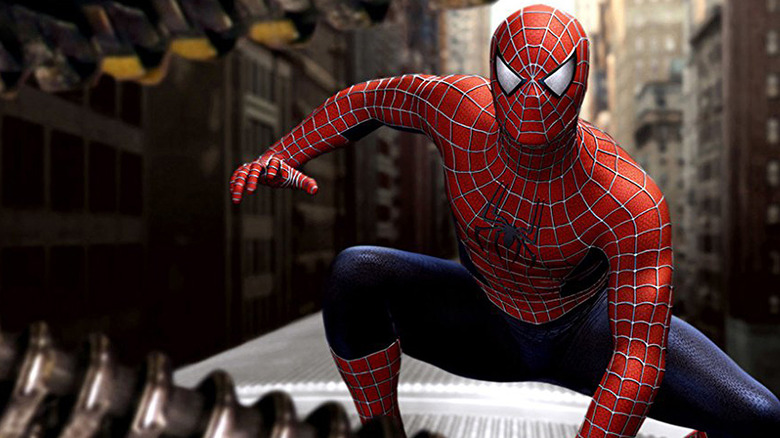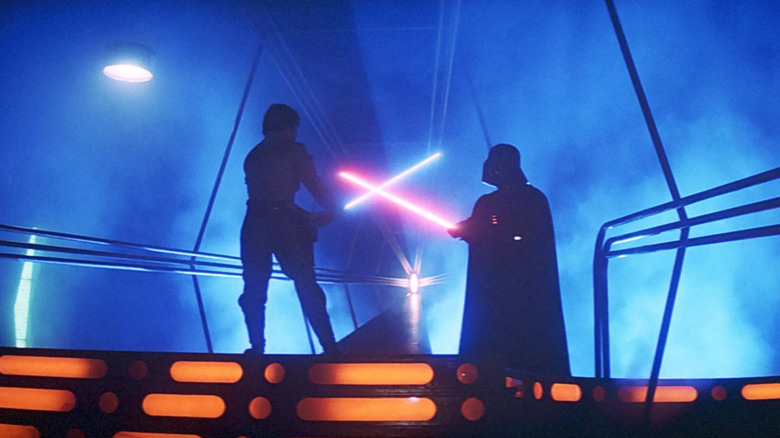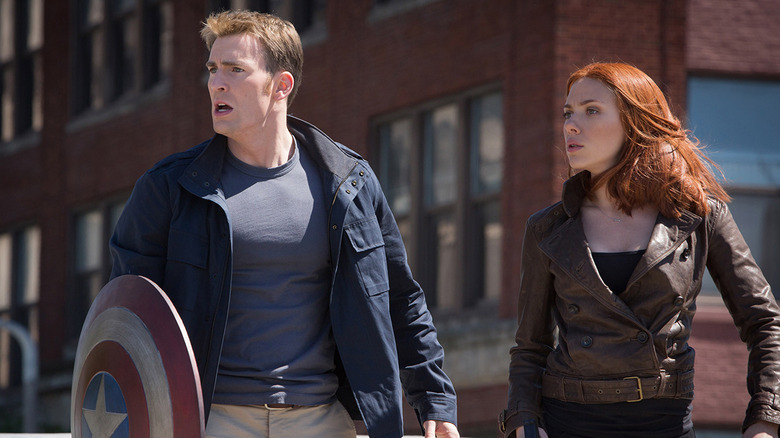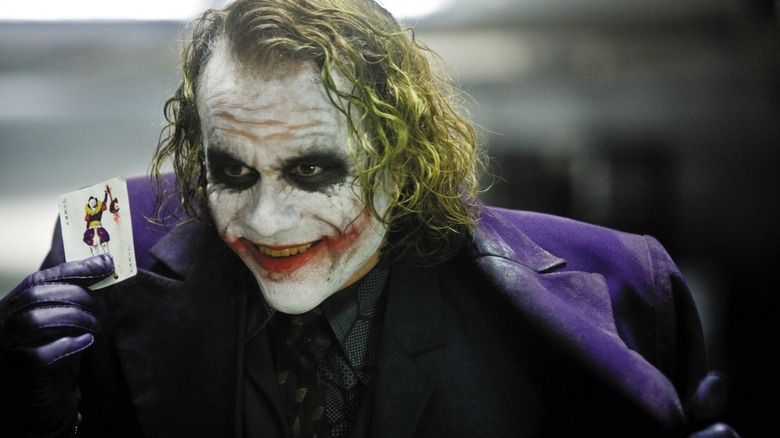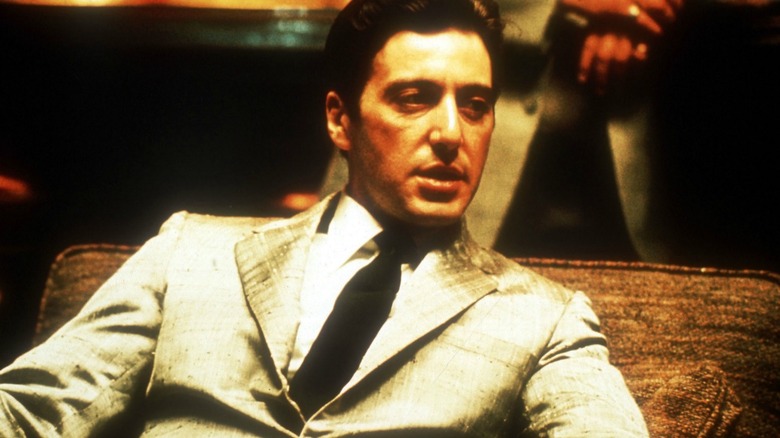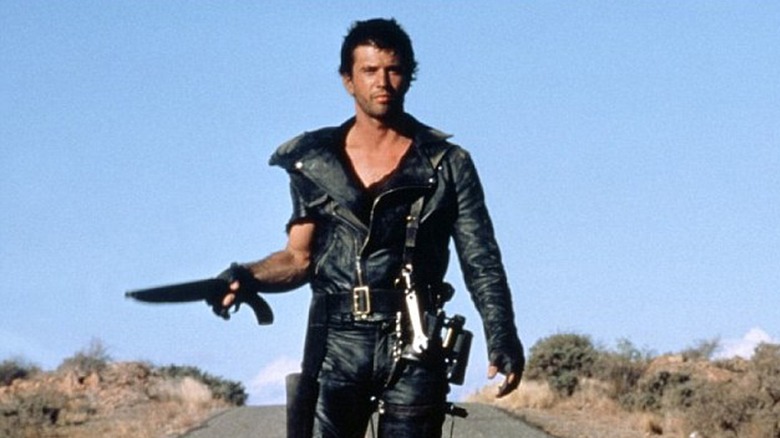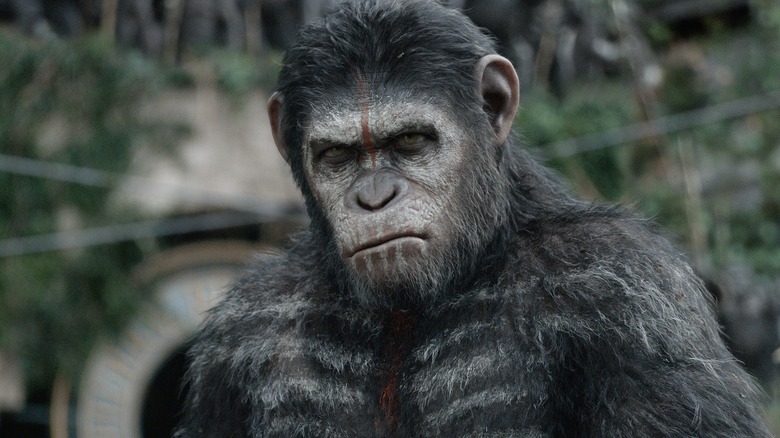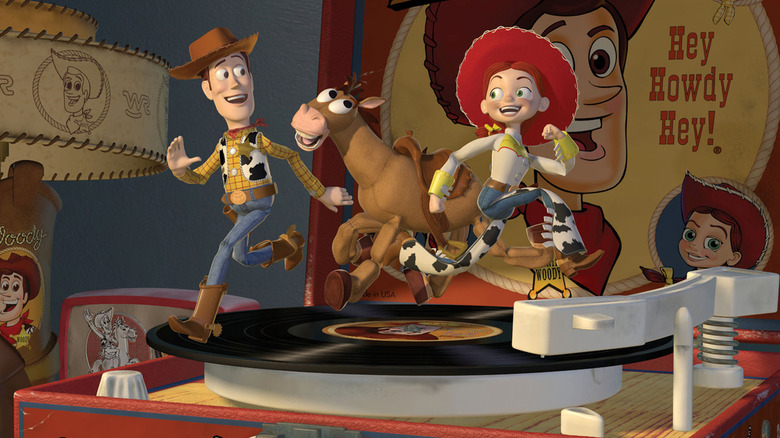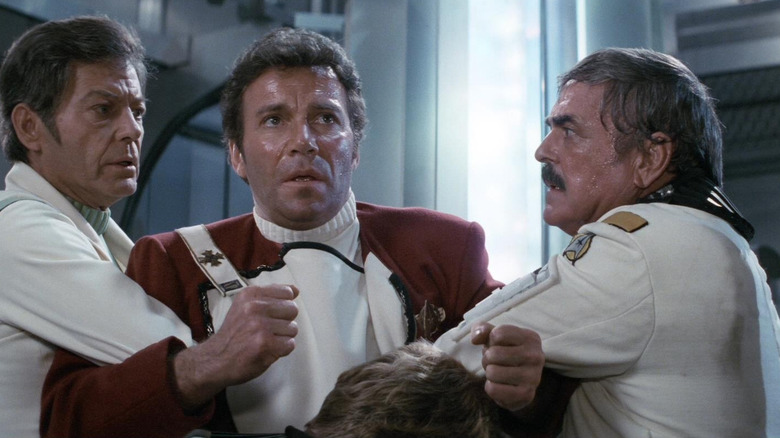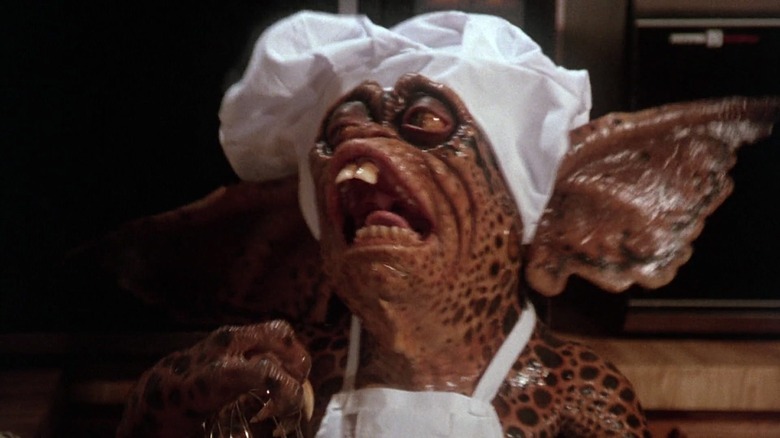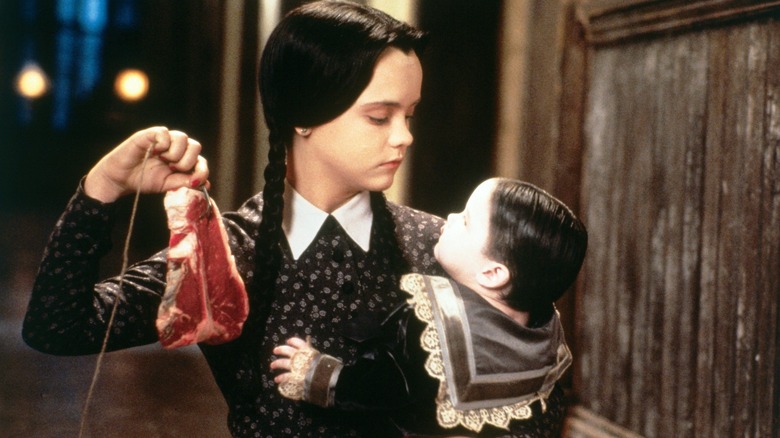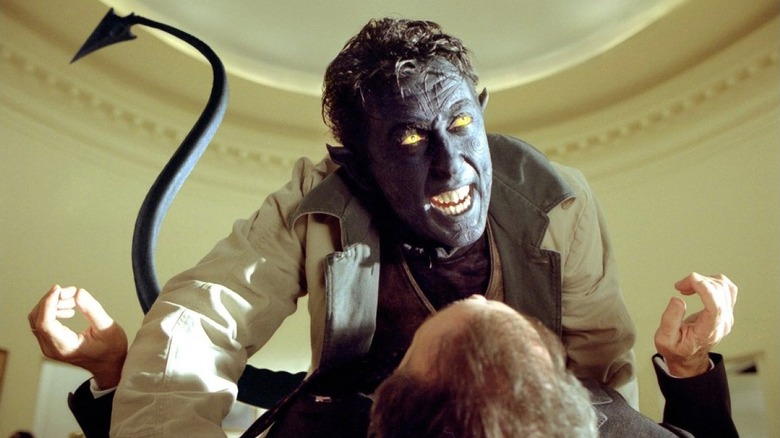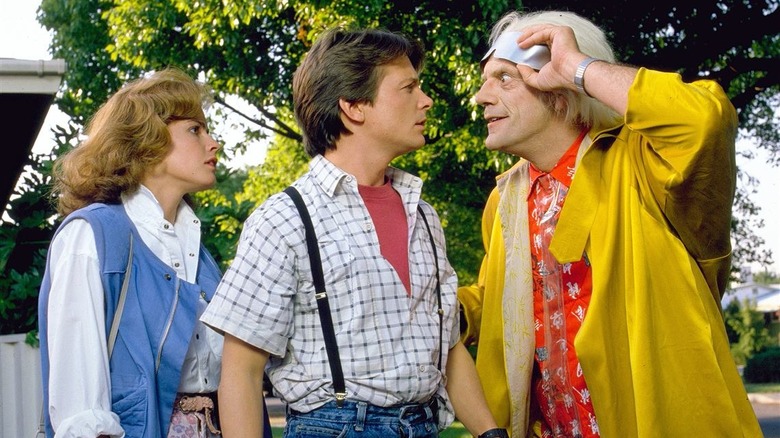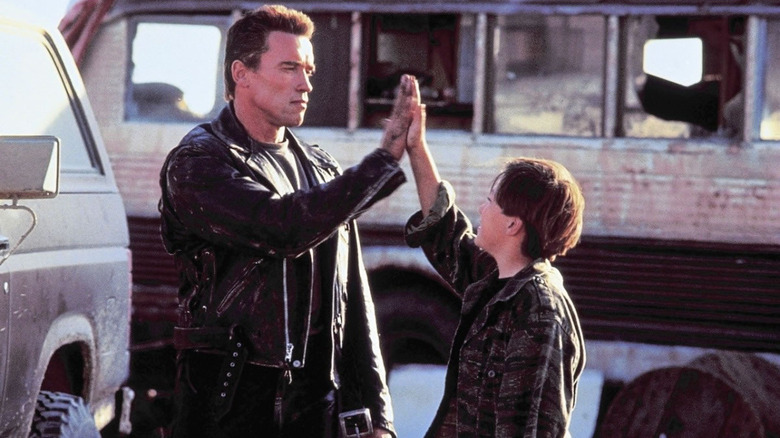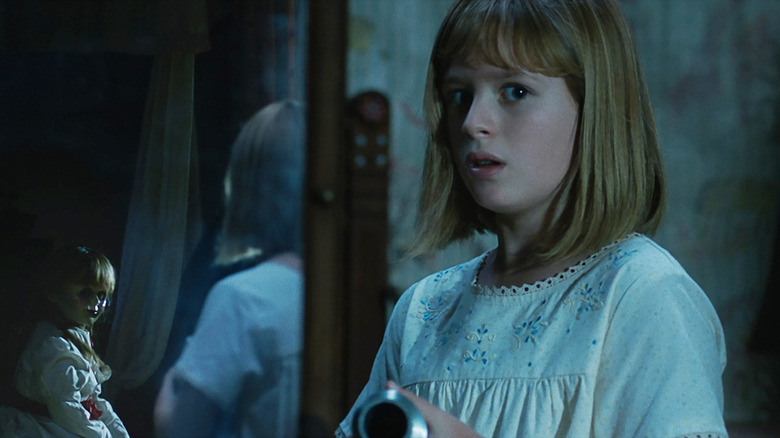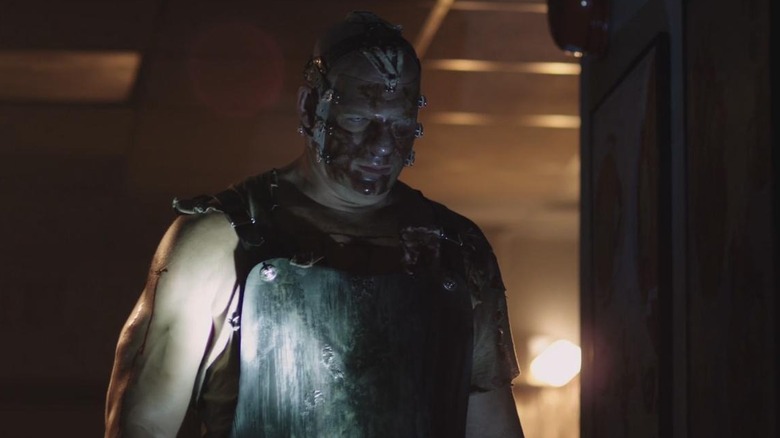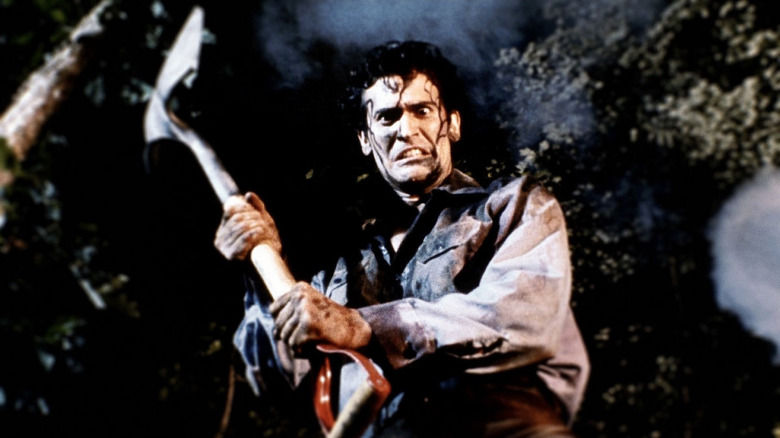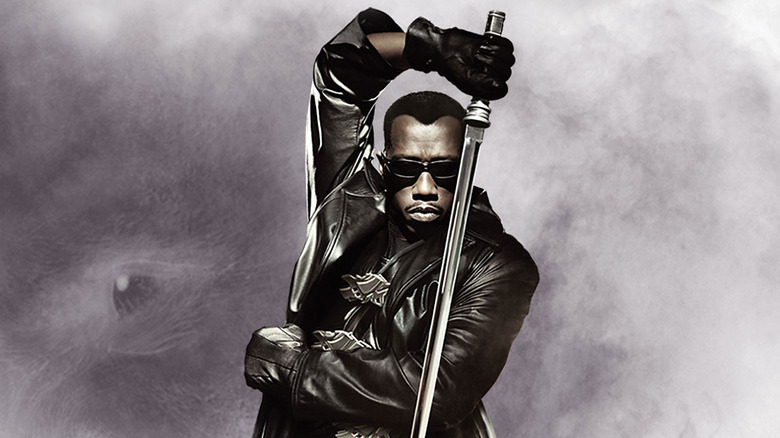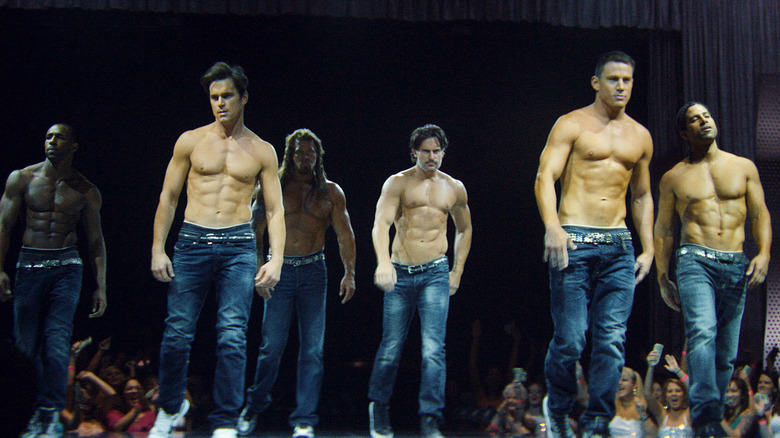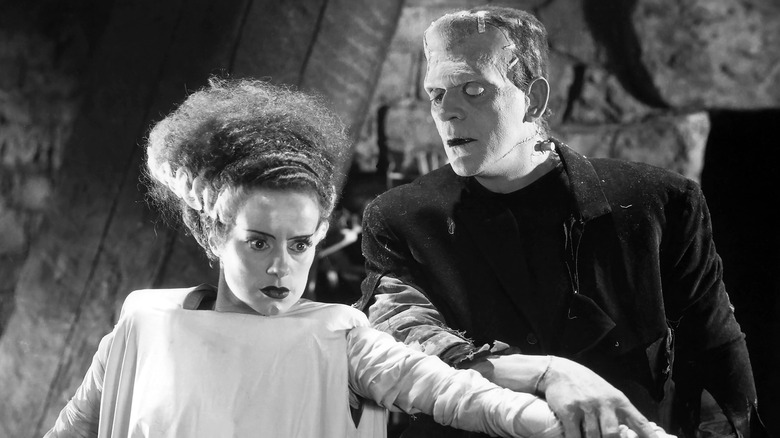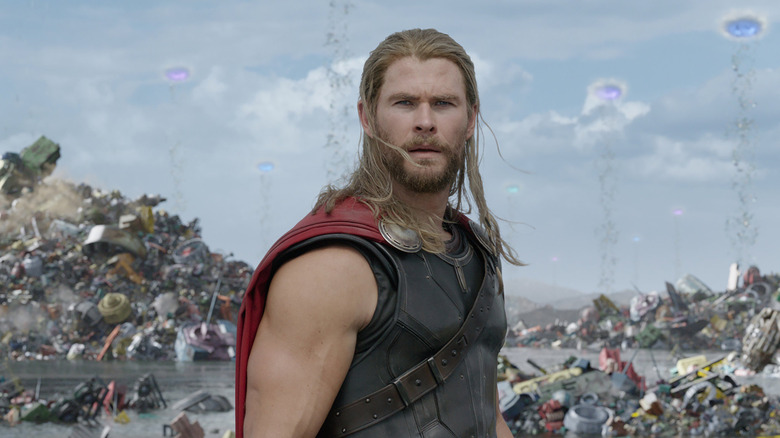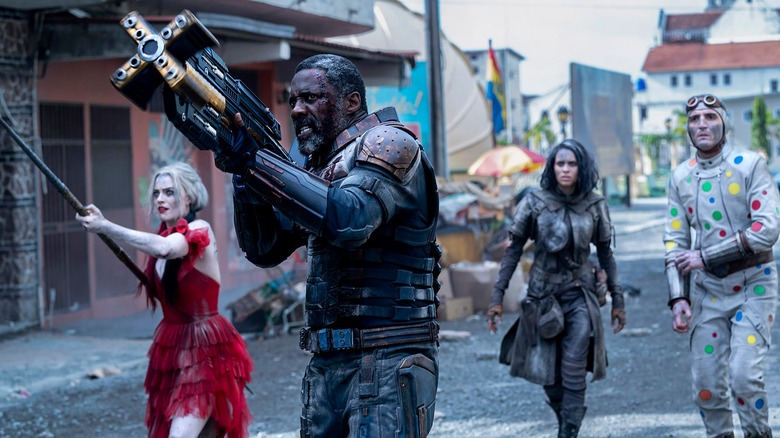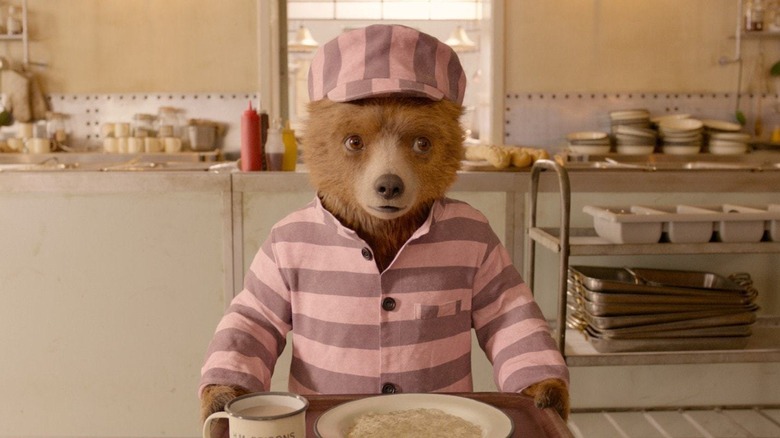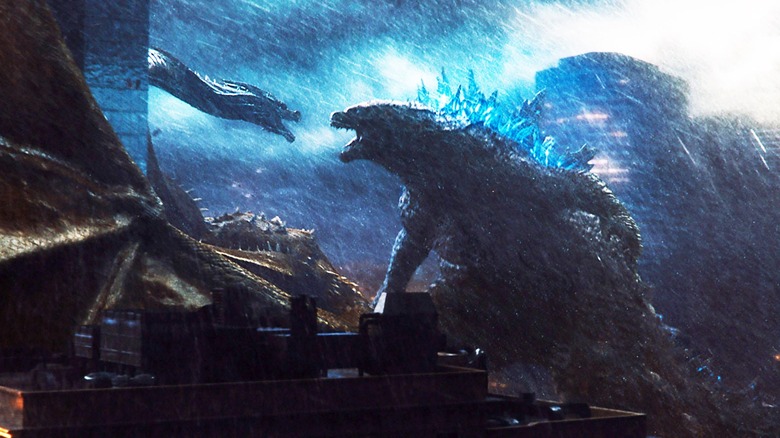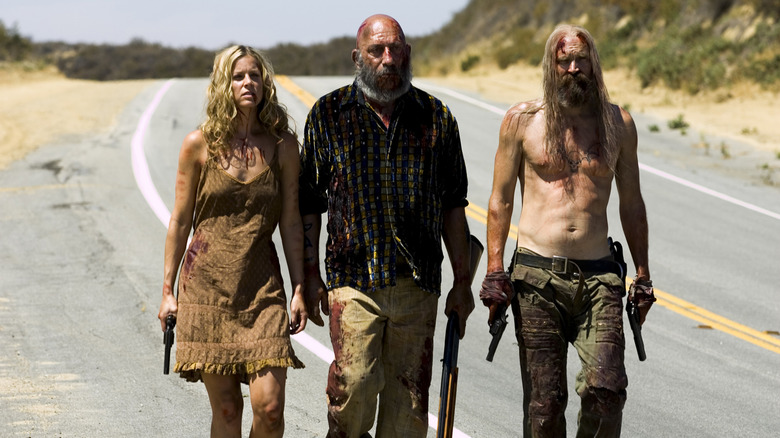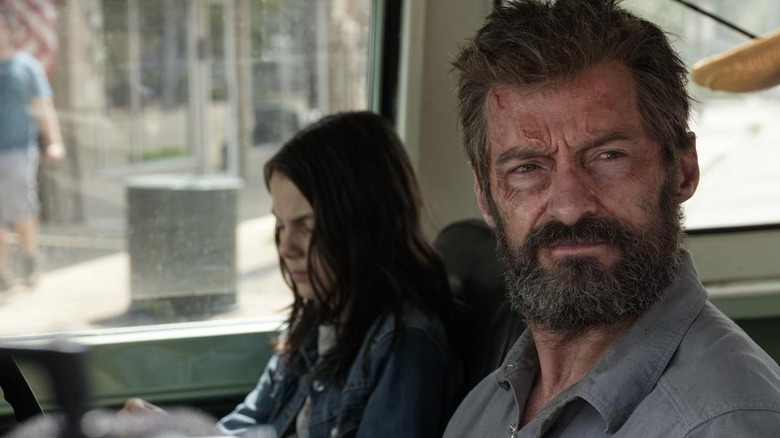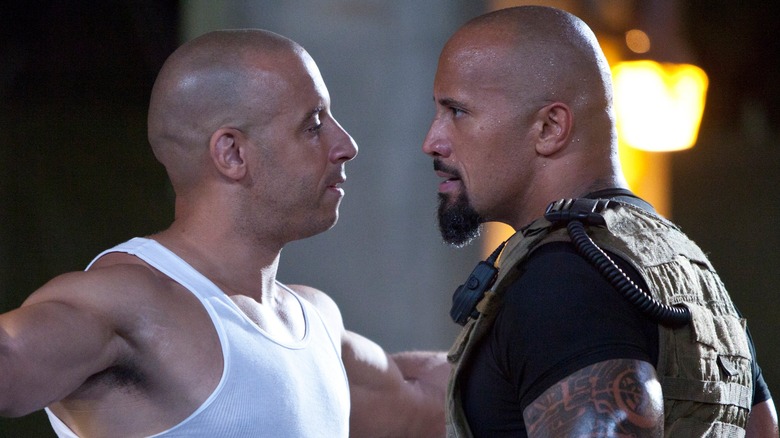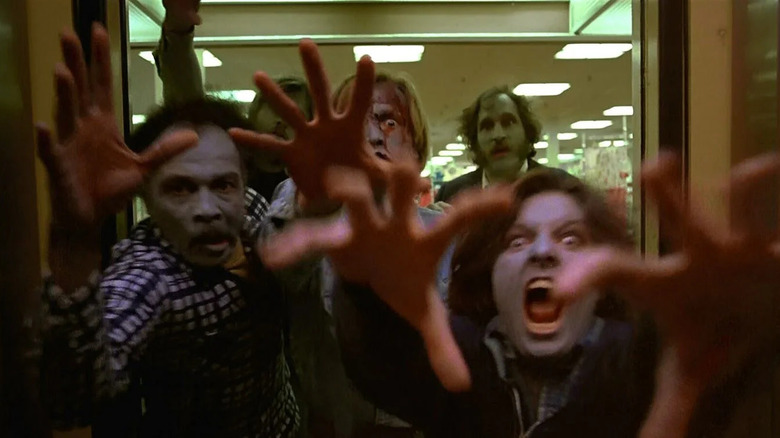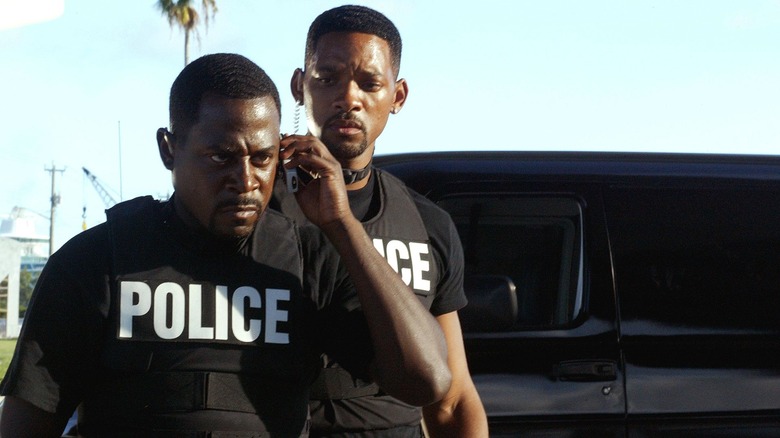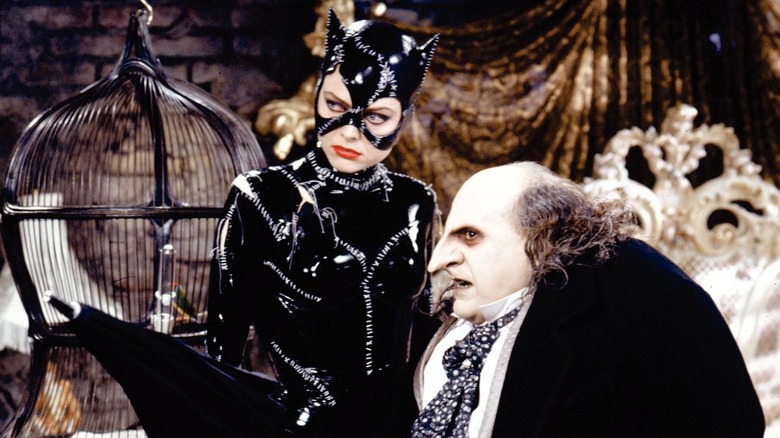30 Sequels Better Than The Original Films
Everyone knows sequels are never as good as the originals, right? Except, every once in a while, they are.
While it's true that there are plenty of sequels that try — and fail miserably — to recapture the magic of the original, becoming instead some sort of pale echo, sequels smart enough (and secure enough) to not feel obligated to make everything bigger, faster and with more guest stars are few and far between.
The best sequels manage to be leaner and tighter, finding room to be more experimental. They embrace a sense of freedom that the "origin story" is behind them and now they can step down on the gas pedal, telling a new tale with the confidence that the audience is well-informed and ready to go along for the ride. Because all the world-building and character introductions were taken care of the first time through, now it's time to get past the tantalizing appetizer and dig into the main course.
While such things are subjective, of course, over the years time stands as the ultimate arbiter. With that in mind, below are some movie sequels generally considered better than their predecessors, many now considered classics in their own right.
Spider-Man 2 (2004)
2002's "Spider-Man" was great, but it was hampered by two things: taking too long with Spider-Man's origin story before it got around to the main action, and making some questionable choices regarding the villain. Willem Dafoe was an excellent choice for Norman Osborn, but his Green Goblin outfit looked goofy, especially the immobile plastic goblin face. Painting Dafoe's real face green would have been far creepier and more effective.
"Spider-Man 2" solved the villain problem by hiring the spectacular Alfred Molina to play Doctor Octopus, a villain who doesn't wear a mask and has a lot more pathos than the Green Goblin ever did. With the origin already told and such a fantastic villain, plus the chance to explore classic comics plot points like Peter getting fed up and quitting as Spider-Man, it's no surprise this is the best movie in Raimi's trilogy — and one so lovingly revisited with 2021's "Spider-Man: No Way Home."
The Empire Strikes Back (1980)
"Star Wars: A New Hope" (or just "Star Wars," as it was known in 1977) is an incredibly fun movie, and it's no wonder it was a world-changing smash hit. But the follow-up, "The Empire Strikes Back," manages to retain that sense of fun while introducing adult drama, romance, and tragedy. "A New Hope" ends with a big victory, but "Empire" is a reminder that wars are long, and even after a major win you may find yourself on the run from a stronger opponent, wondering if winning the battle will cost you the war.
In addition to upping the narrative complexity, "Empire" also introduces important and interesting new characters like Lando Calrissian, Yoda, Emperor Palpatine, and even Boba Fett, who doesn't do much but has a fan following anyway. And yes, as discussed in "Clerks," it has a downer ending, which hits viewers like a gut punch and sets up the even bigger triumph of "Return of the Jedi."
Captain America: The Winter Soldier (2014)
"Captain America: The First Avenger" was one long origin story, taking Steve Rogers from a skinny, sickly Brooklyn kid to a World War II super-soldier, then transplanting him directly from the final days of that war to the 21st century. Its sequel, "Captain America: The Winter Soldier," took that time-displaced Cap and put him at the center of a very modern story.
Like many of the character's best comics, "Winter Soldier" is at heart a story about how Steve Rogers comes from a simpler time and struggles adjusting to the complexities of the future. But just as importantly, he never seems foolish; in fact, his worldview gives him the clarity to see the creeping fascism of Hydra for what it is. On top of all that, "Winter Soldier" makes great use of the Black Widow, introduces the Falcon, and even features a fight with Batroc the Leaper.
The Dark Knight (2008)
"Batman Begins" has a lot going for it, but it's a pretty dour affair, with Christian Bale pouting his way through Bruce Wayne's scenes and growling his way through Batman's. Liam Neeson as Ra's Al Ghul and Cillian Murphy as the Scarecrow don't bring much fun to the movie either, both representing a nihilistic worldview that metes out destruction from a misguided desire to purify the world.
Then "The Dark Knight" came along, and Heath Ledger changed the whole game. Giving what might be the best Joker performance of all time, even though Ledger's Joker was incredibly violent and destructive, one thing he never was is grim. Despite ugly makeup and looking like he must smell terrible, Ledger's magnetism shines through in every scene. Such a worthy villain makes this, hands down, the best Christopher Nolan Batman movie — and possibly the best Batman movie of all time.
The Godfather Part II (1974)
There are very few examples of a movie and its sequel both appearing on legitimate lists of the greatest films of all time, but the first two "Godfather" installments frequently do. "The Godfather" was more than just a gangster film, bringing a level of craft and narrative complexity that the genre had never even come close to before.
"The Godfather Part II" takes that complexity further, telling a story of family across two time periods simultaneously. "The Godfather Part II" is the continuing story of Michael Corleone (Al Pacino), the previously sheltered son who has become as great a mafia leader as his father once was. But it's also the story of his father, played here by Robert De Niro, a Sicilian immigrant in New York City who learns how things work in his new home, and how much there is to be gained from a life of crime. These halves mesh seamlessly into one whole, a rare achievement in cinema.
The Road Warrior (1981)
"Mad Max" is an interesting if idiosyncratic film about a cop in a near-future dystopia who seeks revenge after his family is murdered. "The Road Warrior" takes that same character — and the actor who plays him, Mel Gibson — and builds a whole new world around him. What was once a collapsing dystopia is now a full-on post-apocalyptic world with no unified society at all.
Whereas the first movie was about Max's life, "The Road Warrior" establishes him as a wanderer who reluctantly gets involved in the lives of others — a formula that has worked for the franchise ever since. Add to this the increasingly outré production design and costumes, and it becomes clear that it's "The Road Warrior," much more than "Mad Max," that gave George Miller's Max Rockatansky and his world staying power as a classic sci-fi franchise.
Dawn of the Planet of the Apes (2014)
In 2011, the "Planet of the Apes" franchise was rebooted with "Rise of the Planet of the Apes." However, that film is a sci-fi drama very different in tone from what anyone expected out of a "Planet of the Apes" movie. It focuses on the very first intelligent ape, Caesar (played through motion-capture by Andy Serkis), and his relationship with the human who raised him, played by James Franco. It sets the table for the downfall of humanity and the rise of the apes, but it doesn't really get there.
By "Dawn of the Planet of the Apes," set ten years later, things have progressed. This is the story of humans who — decimated by plague — have lost control of the Earth, and their growing conflict with the increasingly intelligent apes who are its clear inheritors. While "Rise" may have been the key to the way this saga began, "Dawn" is where it really gets exciting.
Toy Story 2 (1999)
"Toy Story" was a game changer for animation and family films, proving that an entirely CGI story could be just as engaging as a traditionally animated one, and making Pixar a major player in the field going forward. The film stands up today, but with everything we've seen since, the seams on this first classic are starting to show. The animation's great, but it's a little stiff by modern standards. Likewise, the story is a lot of fun, but it's surprisingly simple.
Only four years later, "Toy Story 2" leveled up the franchise. It had a more complex story, with a city-spanning rescue mission, a visit to a toy store, and a bunch of new characters. The animation is flawless, and it has just as much heart as the first one, if not more. "Toy Story" is very, very good, but "Toy Story 2" is amazing.
Star Trek II: The Wrath of Khan (1982)
Bringing "Star Trek" to the big screen was a great idea, but "Star Trek: The Motion Picture" was a mess. The costumes and production design were boring, the plot was lifted from an episode of the TV show, and at a runtime of more than two hours the whole thing seemed to move at a glacial pace.
"Star Trek II: The Wrath of Khan" was where they figured out how to make a "Star Trek" movie work, bringing in Ricardo Montalban to reprise his role as one of the show's most memorable villains and introducing important new characters, including Captain Kirk's ex Carol Marcus, their son David, and Kirstie Alley as Saavik. Director Nicholas Meyer also brought the whole thing in at less than two hours with plenty of action along the way. Many fans still regard "Wrath of Khan" as the best "Star Trek" movie.
Gremlins 2: The New Batch (1990)
"Gremlins" is a classic, but it's also a dark, cynical little film. It establishes an idyllic "It's a Wonderful Life"-esque setting and then has ugly little monsters destroy the whole thing.
"Gremlins 2: The New Batch" is a wholly different animal. It moves the setting to a high tech skyscraper in New York City, introducing a far zanier cast of Gremlins who wreak a much sillier sort of havoc. In addition to returning franchise stars Zach Galligan and Phoebe Cates, it introduces John Glover as a Trump-inspired billionaire, Robert Picardo as a corporate sleazebag, and horror legend Christopher Lee as a geneticist whose experiments lead to a much wider variety of gremlin shapes and sizes. "Gremlins" was fun, but as a memorable Key and Peele sketch pointed out, "Gremlins 2" is completely bananas in a way that makes it awesome — and all these years later, exactly what Hollywood should do whenever it's time to "drop a deuce."
Addams Family Values (1993)
1991's "The Addams Family" was a surprisingly successful reboot of the classic TV show, and 1993's "Addams Family Values" takes that success to even greater heights.
First of all, the sequel takes Wednesday and Pugsley to summer camp, where their encounters with more normal children, as well as Peter McNichol and Christine Baranski as the relentlessly sunny couple who run the camp, provide some of the most memorable gags in the entire franchise. Also, most of the first movie is occupied with a conceit that Uncle Fester is being impersonated by a con artist, until he turns out to be the actual Uncle Fester at the very end. In the sequel, we know he's Fester from the beginning, so Christopher Lloyd can fully occupy the role in a way he didn't get to the first time around, and his relationship with Joan Cusack's black widow is a particular highlight.
X2: X-Men United (2003)
"X-Men" came out in a time when superhero movies weren't a sure thing yet, and in retrospect it's hard not to notice that it hedges its bets, posing as more of a "Matrix"-esque sci-fi film.
"X2: X-Men United" is infused with far more confidence. It makes the X-Men feel more like superheroes, even if they still wear black leather. It expands the roles of Iceman and Pyro, introduces Nightcrawler, and brings the first movie's major villains, Magneto and Mystique, into an uneasy alliance with the X-Men against a much bigger threat. All of this goes a long way toward building the kind of complex world and layered character dynamics that made the comics such a big hit for so long. It also just makes a lot more sense than the first film, forgoing the "deadly device at the top of the Statue of Liberty" silliness for a more believable threat of extermination at the hands of bigotry.
Back to the Future Part II (1989)
"Back to the Future" is a fun movie about a teen from the '80s visiting the '50s. But "Back to the Future Part II" tells a complex sci-fi story about the nature of time travel that the first movie didn't even attempt.
In the first film, Marty McFly visits the past, ensures his existence by making sure his parents fall in love, and then goes home to the present. In the second movie, he goes to the future, then returns to the present only to find that it's been altered by another character messing with the timeline, which means he has to go back to the past again to set things right. That third segment even features scenes from the original film from different angles, as Marty does his best to make sure the plot of the first movie unfolds as necessary. The end result is a wild ride.
Terminator 2: Judgment Day (1991)
The seven years between 1984's "The Terminator" and 1991's "Terminator 2: Judgment Day" marked a huge evolution in special effects, and an increased budget made utilizing those state-of-the-art effects possible. In "The Terminator," the antagonist is a robot in human form who's come from the future to kill Sarah Connor before she gives birth to a son.
In "Judgment Day," that robot (played by Arnold Schwarzenegger) has been reprogrammed to protect Sarah and her son from a more dangerous model of Terminator. The T-1000 isn't just a robot in human form, it's a shapeshifting robot made of liquid metal that can take the form of any human. The development of CGI "morphing" technology made the T-1000 possible, and it was mind-blowing at the time. Along with an engaging plot, the special effects made this sequel a standout.
Annabelle: Creation (2017)
Technically, as its title implies, "Annabelle: Creation" is a prequel to "Annabelle," not a sequel. Still, it's the second movie in the "Annabelle" series (a spinoff of the "Conjuring" films), and critics and audiences agree it's far more effective and unique than its predecessor.
Whereas the first film had a satanic cultist bring the Annabelle doll to malevolent life with a blood sacrifice, "Creation" goes back much further to show that the doll was evil from the beginning, and why. The prequel also brings a whole group of young orphaned girls into the house where Annabelle was built, and their terror is that much easier to empathize with when the demon that lives in the doll begins menacing them. In short, "Annabelle: Creation" has turned out to be a must-see horror film on a level that "Annabelle" never quite was.
See No Evil 2 (2014)
"See No Evil," featuring veteran WWE wrestler Kane as the monstrous Jacob Goodnight, was a forgettable horror movie that most would probably agree didn't need a sequel at all. But "See No Evil 2" was directed by up-and-coming horror mavens Jen and Sylvia Soska, and it uses the Goodnight character (still played by Kane) to build a complex, self-aware little movie that revitalizes not just the "See No Evil" franchise, but the slasher genre as a whole.
The cast is built around popular scream queens Danielle Harris and Katharine Isabelle, and the whole thing is set in a city morgue where a young undertaker's friends have come to visit her on her birthday, just as the supposedly lifeless body of Jacob Goodnight is delivered. When Goodnight gets up, the whole thing turns into a violent and terrifying ordeal that any horror fan will enjoy.
Evil Dead II (1987)
"Evil Dead" is a ridiculous film by accident. It wants to be straightforward horror, but thanks to a low budget and the off-kilter sensibilities of its director, Sam Raimi, and star, Bruce Campbell, it turns out to be something much weirder. In "Evil Dead II," Raimi embraced that weirdness and made full use of Bruce Campbell's comedic abilities to make a delightfully bizarre horror comedy that starts in the same cabin in rural 1980s America and ends in medieval Europe.
Everything that came after — "Army of Darkness," "Ash vs. Evil Dead," the darker "Evil Dead" remake, probably the entire future career success of both Raimi and Campbell — all happened because of the slick, tongue-in-cheek self-awareness of "Evil Dead II" far more than the low-budget schlock of the original "Evil Dead." After all, Ash isn't really Ash until he replaces his possessed and severed hand with a chainsaw, and this is the film where that happens.
Blade II (2002)
The biggest reason "Blade II" is better than the first "Blade" is simple: Guillermo del Toro. The Mexican director was still mostly unknown in the U.S. when he was hired to direct the second film based on the Marvel Comics vampire hunter played by Wesley Snipes.
The story of the sequel is pretty similar to that of the first movie, but del Toro brings a level of style that really makes "Blade II" something special. The complex fight scenes, often involving Blade, his reluctant vampire allies, and the super-vampires known as Reapers, are by far the best in any of the three "Blade" movies, and the juxtaposition of a gothic Eastern European setting with a stylish punk aesthetic gives the film an unmistakable — and unmistakably del Toro — look and feel. Interestingly, the Reapers are almost identical to the vampires of del Toro's much later TV series "The Strain," so he must have realized there were ideas in this movie worth holding onto.
Magic Mike XXL (2015)
"Magic Mike" is a Steven Soderbergh drama about a male stripper who doesn't want to be a stripper anymore. "Magic Mike XXL," directed by Gregory Jacobs with Soderbergh as a producer, is a movie about the joys of being a male stripper. While there was a lot of fun to be had in the first movie, the sequel puts that fun at the forefront.
It portrays a kind of easygoing, comfortable masculinity that isn't threatened by putting one's body on display for the pleasure of others. Unsurprisingly, the biggest fans of "XXL" were women, who flocked to the movie in groups, almost as if they were going to an actual male strip club, albeit one populated by some of the most handsome actors in Hollywood. Visual pleasure is central to film as a medium, and few films have made that pleasure as central, or as visceral, as "Magic Mike XXL."
Bride of Frankenstein (1935)
Visionary director James Whale didn't want to make a second "Frankenstein" movie, even though the first had been a smash hit. The studio finally convinced him by letting him do pretty much whatever he wanted. The result was "Bride of Frankenstein," an arch, deliberately campy outing that's generally regarded as the first horror comedy.
Whale paired the high-strung Dr. Frankenstein with a new scientist named Dr. Praetorius, a proud degenerate who gleefully defies the laws of nature. He also gave the Monster the power of speech, which he had in the novel but lacked in the original film. There's still plenty of pathos in "Bride," particularly the extremely dark ending, but it's balanced with a levity that the original lacks, making for a much stronger film. This was Whale's last "Frankenstein" movie, and is widely regarded as the highlight of the franchise.
Thor: Ragnarok (2017)
Chris Hemsworth was always charismatic and funny as Thor Odinson, the Asgardian God of Thunder and the Avengers' resident himbo. In fact, he's probably the best part of 2011's "Thor," a movie that has a lot going for it, but never quite lives up to its potential, despite the work of Hemsworth and a star-making turn from Tom Hiddleston as Loki. A mix of mythic fantasy, superhero action, and fish-out-of-water romantic comedy, it remains less than the sum of its parts, and is perhaps a bit clunkier than it ought to be. The 2013 sequel "Thor: The Dark World" seemed to double-down on this clunkiness, with arguably the MCU's worst villain ever and a MacGuffin that made no sense, even for the MCU.
Then came the third movie, "Thor: Ragnarok," and finally things got on track. Shifting directors from Kenneth Branagh to Alan Taylor to Taika Waititi, these movies clearly reflected whoever was in the chair — and "Ragnarok" brought a Waititi-esque, unorthodox buoyancy to the series that felt like an injection of buttery popcorn directly into the vein.
Relocating Thor and Loki far away from both the overwrought fantasy of Asgard and the mundanity of Earth, setting the second act of the movie instead on the weird junkyard planet of Sakaar, ruled by the campy Grandmaster (Jeff Goldblum), the MCU had never seen anything like this before. For the first time, Thor and Loki had a plot as fun as their characters, plus the Hulk (Mark Ruffalo) and Valkyrie (Tessa Thompson) memorably came along for the ride. The stakes were as high as ever (or higher, considering Asgard was being threatened with complete destruction), but the storytelling in "Ragnarok" allowed for a lot more fun and a level of knowing ridiculousness that helped the whole "mythic space gods" concept go down just a little bit easier.
The Suicide Squad (2021)
David Ayer's 2016 "Suicide Squad" was a mess. To start with, it was the third film in the DCEU, arriving the year before "Justice League." That meant Ayer had the unenviable task of introducing an entire team of incarcerated supervillains in a world where audiences had barely met any of the superheroes, let alone their enemies.
Even though "Suicide Squad" spends at least half its run time on multiple sequences designed to introduce the team, most of the characters remain sketchy and underdeveloped at best. When the plot finally does get going, it doesn't make a whole lot of sense. Furthermore, main villain Enchantress (Cara Delevingne) was one of the villains Amanda Waller (Viola Davis) had recruited for the team, which really calls into question why her idea of a supervillain task force ever seemed like a good idea to anybody.
Despite being terrible, "Suicide Squad" did uncover a tremendous hunger for an offbeat film about these DC antiheroes. In the aftermath of "Batman v Superman," Warner Bros. took footage from Ayer's somber film and put together a fun, breezy trailer that went viral. It was as if someone had made a fan-produced cut of "Suicide Squad" as a comedy. But the resulting tug-of-war between director and studio ultimately resulted in a disjointed, unsure-of-itself debacle.
Enter the king of "offbeat." James Gunn's 2021 "The Suicide Squad" (with the all-important definite article in the title) is a whole lot better. It brings in a bunch of new team members like Bloodsport (Idris Elba), Ratcatcher II (Daniela Melchior), and Peacemaker (John Cena), all funnier and more well-developed as characters than anybody from the first film. It also capitalized on Margot Robbie as Harley Quinn, who had been the best part of the first movie, and then had another movie in between — "Birds of Prey" — to develop as a character and gain new fans. With a better script, better cast, better direction, and a clearer sense of the DC Extended Universe as a whole, it's no surprise that "The Suicide Squad" became a vast improvement over its "The"-less predecessor.
Paddington 2 (2017)
A live action/CGI family movie based on the classic children's character Paddington Bear is exactly the sort of film you'd expect to get made these days. What nobody saw coming was that 2014's "Paddington" turned out to be absolutely delightful, retaining the quaint charm and warmth of the original stories, instead of resorting to crass fart jokes and pop culture references so common in other children's movies. It also boasted a truly stellar cast, with Ben Whishaw as the voice of the bear, Sally Hawkins and Hugh Bonneville as the couple that welcomed him into their family, and Nicole Kidman as a villainous taxidermist. The movie charmed both children and adults, earning a truly impressive 97% on Rotten Tomatoes.
"Paddington" was so beloved by its audience that it is all the more impressive that 2017's "Paddington 2" turned out to be even better than the first film, earning an almost-unheard-of 99% on Rotten Tomatoes that ranks it among the most acclaimed films of all time. Consider this: Paddington (97%) and "Paddington 2" (99%) have a higher cumulative RT score than "The Godfather" (97%) and "The Godfather II" (96%).
The sequel, centered on Paddington being framed for a crime and sent to prison, might sound like a bit of a bummer, but as the little bear's charisma wins over hardened inmates, it becomes the sort of film that renews your faith in humanity, humor, love and kindness. With Hugh Grant and Brendan Gleeson joining the already impressive cast, "Paddington 2" might be as perfect a family film as you're ever likely to see.
Godzilla: King of the Monsters (2019)
While 2014's "Godzilla" was a huge improvement over the previous attempt to recreate the Japanese monster for American audiences (an unmitigated disaster released in 1998 and most memorable for Matthew Broderick's beret), it didn't exactly set the world on fire. While Godzilla looked great, the monsters he fought were generic and bore little resemblance to the unforgettable foes he faced in the original Japanese series of films. Furthermore, the soldier played by Aaron Taylor-Johnson was equally milquetoast, as forgettable a human protagonist of a monster movie as we've ever seen — a problem that made even more glaring the lack of screentime for the giant lizard everybody had paid to see. Nevertheless, the movie was enough of a hit for Legendary Pictures to move forward with their plans to make Godzilla the center of a "Monsterverse" franchise.
The next film in that franchise was 2017's "Kong: Skull Island," but it was a prequel that didn't even involve Godzilla directly. A direct sequel to the 2014 film didn't arrive until "Godzilla: King of the Monsters" in 2019. Fortunately, it arrived with everything Godzilla's previous effort was missing.
The classic monsters Mothra, Rodan, and King Ghidorah all made their return to kick off a globe-spanning giant monster battle royale, with the kind of monster-fighting action Godzilla fans crave. "King of the Monsters" also brought in Kyle Chandler, Vera Farmiga, and Millie Bobby Brown to lead the human cast as a family being torn apart in the midst of the apocalyptic monster conflict. Whether this Americanized series is your cup of tea or not, it's hard to deny that "Godzilla: King of the Monsters" improves on "Godzilla" on basically every level.
The Devil's Rejects (2005)
"House of 1000 Corpses," the feature directing debut of rocker Rob Zombie, was a fun movie for horror fans, so over the top that it played more like an ultra-violent cartoon than a serious film of any sort. The titular house, occupied by the murderous Firefly family, became a treacherous last stand for two young couples with the misfortune of ending up there on Halloween night. Zombie's tribute to the sort of low-budget grindhouse horror movies he grew up on, the film never really attempted to be more than that.
Nevertheless, the film was a success, so Zombie jumped at the opportunity to make a sequel, becoming considerably more ambitious.
"The Devil's Rejects" opens with the destruction of the Firefly house in a police raid, and the movie focuses on three family members who escape and go on the lam: psychopathic murder-artist Otis (Bill Moseley), his equally depraved half-sister Baby (Sheri Moon Zombie), and Baby's father Captain Spaulding (Sid Haig), a degenerate clown. While every bit as violent as its predecessor, "The Devil's Rejects" abandons the cartoonish tone for an atmospheric 1970s-inflected road movie with a soundtrack of classic Southern rock. If horrific violence isn't your thing, this movie probably still isn't for you — but if it was the overall ridiculousness of "House of 1000 Corpses" that turned you off, "The Devil's Rejects" might be exactly your thing.
Logan (2017)
Which Wolverine movie was "Logan" an improvement on? How about practically all of them? Spinoffs of the larger X-Men franchise that first introduced Hugh Jackman as Logan, the nigh-indestructible mutant with metal claws, Wolverine had his own solo films before James Mangold came along (2009's "X-Men Origins: Wolverine" and 2013's "The Wolverine"), but this Western-tinged goodbye to the character was absolutely transcendent to the point where some regard "Logan" as not just the best film in the X-Men franchise, but the best superhero movie of them all.
In any case, while "X-Men Origins: Wolverine" is a nonsensical mess, and "The Wolverine" is merely a pretty good superhero action movie, "Logan" is a genuinely moving story about an aging hero dealing with his own mortality and the apparent loss of the hope he and his fellow X-Men once fought for. Into this apocalyptic landscape arrives Laura (Dafne Keen), a young girl in need of protection, who has far more in common with Logan than he expected. Naturally, she brings his long-buried heroic spirit back to the fore, and the old man once known as Wolverine makes one last stand. Owing as much to Westerns as it does to the X-Men movies, "Logan" is about as good as superhero films can get.
Fast Five (2011)
It took the "Fast and Furious" movies a few installments to figure out exactly what it wanted to be. The first film, 2001's "The Fast and the Furious," was a relatively straightforward crime drama set in the world of street racing, starring Paul Walker, Vin Diesel, Michelle Rodriguez, and Jordana Brewster. Only Walker returned for 2003's "2 Fast 2 Furious," which filled out the cast with Tyrese Gibson and Chris "Ludacris" Bridges, for another story about crime and racing. The third movie, "The Fast and the Furious: Tokyo Drift" left all of the previous characters behind, in service of a story about an American teen (Lucas Black) involved in street racing in Japan.
"Tokyo Drift" ended with a cameo from Vin Diesel, however, and "Drift" director Justin Lin would turn out to be instrumental in shaping the franchise's future. He would return (as would Diesel and Walker) for the fourth film "Fast & Furious," and 2011's "Fast Five" brought it all together.
Justin Lin directed once again, and with Walker, Diesel, Brewster, Tyrese and Ludacris (joined by Sung Kang from the third movie and Gal Gadot from the fourth), the franchise was finally firing on all cylinders. Also along for the ride was Dwayne "The Rock" Johnson (as a US Government Agent hunting the protagonists, then joining them), and an over-the-top heist plot that put the hot rods to new use.
"Fast Five" would be not only a huge hit, but also crafted a blueprint for future installments of this series, each going bigger than the last. "Fast Five" is probably still the best, however — and there's not many franchises that can say the fourth sequel was their best film.
Dawn of the Dead (1978)
The 1968 George Romero classic "Night of the Living Dead" remains a great film, both on its own merits and as the birth of the modern zombie genre that stands today as a cross-media cash cow that extends from "The Walking Dead" to "Left 4 Dead" to "Army of the Dead." Despite an effectively grim atmosphere and talented cast, however, its budget was tiny and ambitions small. Although the zombie problem appears in "Night" to be widespread, the movie is focused entirely on a small group of people holed up in a rural farmhouse, attempting to hold the dead at bay with only vague hints that something far greater is going on in the rest of the world.
By the time Romero returned to the zombie narrative for 1978's "Dawn of the Dead," he had more resources to play with. After a brutal opening showing how the zombie infestation has devastated low-income communities in Philadelphia, the movie follows two cops and a pair of TV journalists as they flee the city and find refuge in a suburban mall. Although the main cast is even smaller than that of his 1968 film, Romero's reality now feels much bigger, and the threat that much more real. Although the group manages to secure the mall against the hordes, this apocalyptic temple to capitalism wasn't made to serve as a fortress — and the tension becomes palpable as the living dead storm the gates.
Bad Boys II (2003)
1995's "Bad Boys" was the debut movie from Michael Bay, a rock star music video filmmaker who would re-shape Hollywood with his glossy visuals, adrenaline-pumping spectacle-over-story aesthetic, and belief that when all else fails, just blow something up. It all began, for better or worse, with this one.
Starring Will Smith and Martin Lawrence as two reckless cops protecting a witness and trying to find a large amount of heroin that disappeared from their police station, the movie combines comedy and over-the-top action into a frothy thrill ride in cinematic form. It's a style Bay would perfect in the years to come with crowd-pleasing spectacles like "The Rock" and "Armageddon."
By the time he made "Bad Boys II" in 2003, Bay was riding high at the top of his game, and that's reflected in the product. "Bad Boys II" was bigger in scale than the first movie, from the explosions to the amount of missing drugs. On the other hand, it didn't forget the importance of Lawrence and Smith's chemistry and the appeal of their characters. Its introduction of Gabrielle Union as Syd (Lawrence's sister who also happens to be Smith's girlfriend) added a whole new level of conflict. While "Bad Boys" was a fun time, every facet of the film was heightened in "Bad Boys II," striking a balance that kept it from being too big or loud, making it simply fun to watch.
Batman Returns (1992)
Although it was a monstrously huge hit at the time, 1989's "Batman" is, in retrospect, a bit of an odd duck. It's a superhero film, sure, but outside of the Christopher Reeve Superman series, superhero films weren't really much of a defined thing yet. "Batman" contains a surprising amount of '80s action movie DNA, which pulls it away from the conventions of comic book storytelling: a villain revealed to be responsible for the hero's parents' deaths, the hero revealing his secrets to his love interest, a climactic fight in a tower that ends with the villain falling to his death. On the other hand, director Tim Burton put a lot of his oddball gothic style into the film, making it distinctive enough to briefly foreshadow a superhero film revolution that wouldn't truly take hold until more than a decade later.
By the time he directed 1992's "Batman Returns," Burton had a lot more freedom to bend the project to his own aesthetic and narrative whims. Consequently, "Batman Returns" is also an odd duck, but one with a much clearer vision.
It's set at Christmas, with lots of atmospheric snow and statues of angels. Unlike the first movie's Joker (Jack Nicholson), who despite being a clown had a bunch of burly gangsters as henchmen, new villain the Penguin (Danny DeVito) is a former circus freak whose henchmen are all weird carnies — except for the ones who are actual penguins with colorful missiles strapped to them. The grotesquery of the Penguin is juxtaposed with the far more appealing, morally ambiguous Catwoman (Michelle Pfeiffer), who's both an enemy and a love interest for Batman (Michael Keaton). Christopher Walken also appears as evil businessman Max Schreck, giving one of the most Walken-esque performances of his life. The whole thing is a weird, spooky, campy delight, and you can tell it's exactly what Burton wanted it to be.
